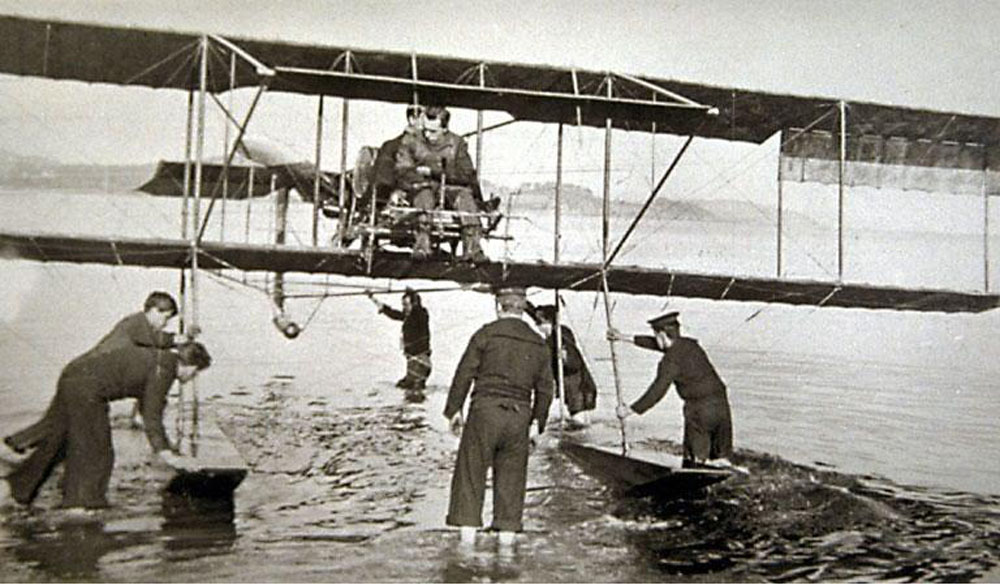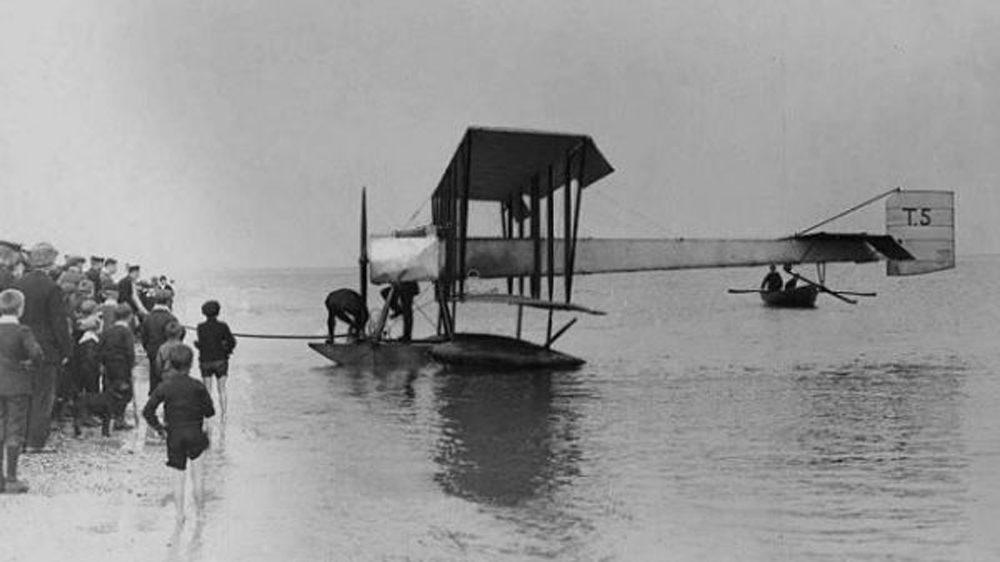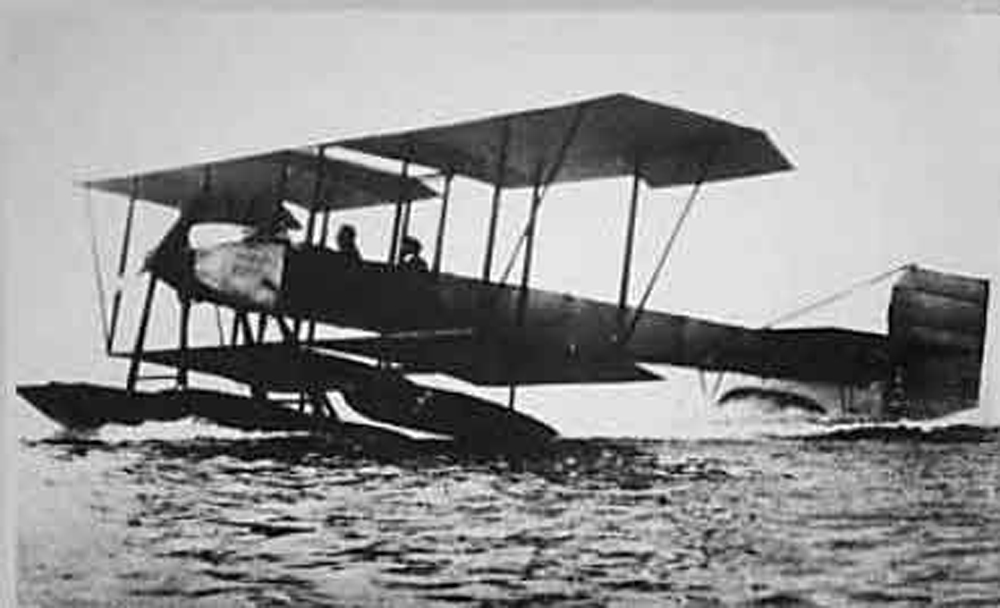1913 – Spotting Submarines
| < Flying round the Forth | Δ Index | Montrose Aerodrome > |
The Sphere – April 1913, page 65

Some interesting experiments have been made in the course of the flying week at Rosyth to test the visibility of a submarine when viewed from above. The experiments were of a similar nature to those made by “The Sphere” in the English Channel last year.
The recent Forth experiments showed that the water of the Forth is sometimes too muddy to enable the hydroplanes to see the submarine even when viewed directly from above. Yet the hydroplane could always “spot” its submerged enemy: the swirl of bubbles and foam which rode in the wake of the submarine was an infallible index to its position. The experiments confirmed the expected use of the hydroplane in this direction.
The machine shown here is the 70 hp Short biplane converted into a hydro aeroplane by the addition of floats.
Short Aircraft used at Carlingnose
 Short Tractor Biplane S.45 Type.
Short Tractor Biplane S.45 Type.
Four aircraft built at Eastchurch. Two-seat trainer that could be fitted with wheels or floats.
Length 35ft 6ins (10.80m). Wingspan 42ft 0ins (12.90m).
Engine (S.45) 1 X 70hp Gnome 7-cylinder rotary. Max speed 60mph.
Serial No.5. Originally numbered T.5. Became No.5 by 2 September 1912. Cost £1184. Shorts construction No. S.45.
Delivered to Eastchurch Flying School 23 May 1912, first flight next day. The aircraft was fitted with floats to take part in the Royal Navy Review at Portsmouth 3 July 1912.
Photo shows No. 5/T.5 at Portsmouth for the Royal Review, July 1912. Aircraft fitted with single central float and airbags under each wing.
The aircraft was damaged 13 July 1912 and returned to Shorts at Eastchurch. Here it was given a new cowling, a coaming around the cockpits, greater span on the upper wings and revised ailerons.
Fitted with wheels it took part in army manoeuvres in September 1912. Refitted with floats it served at Carlingnose Seaplane Station near Rosyth until it capsized 4 October 1913 and was deleted.
No.413 (Shorts c/n S.48) was delivered as a landplane to the Central Flying School at Upavon in October 1912. It was damaged beyond repair in a landing accident 3 December 1912.
Nos 423 and 424 (S.49 and S.50) were delivered to the CFS in February 1913. They were transferred to the Admiralty in August 1914. It is uncertain if they entered service with the Royal Naval Air Service.
 Short S.41 “Hydro-Aeroplane”.
Short S.41 “Hydro-Aeroplane”.
The original version of the S.41, it was converted to a landplane and flown by Cdr R. Samson – also the pilot of its maiden flight – during the Army manoeuvres of September 1912.
With its floats restored, it started flying from the temporary seaplane station at Carlingnose on October 2nd 1912.
In January 1913 it underwent an overhaul during which the centre section gap was covered.
In September that year it was overhauled again and the aircraft emerged completely different in shape, fitted with folding wings of greater span and a new rudder.
In 1914 it was refitted with a 140 hp Gnôme engine and assigned to the Eastchurch flying school.
In 1915 the S.41 was sent to the Aegean theatre and in 1916 was spotted at Inbros.
Not included in the March 1916 list of naval aircraft, it may have been destroyed prior to that month.
| < Flying round the Forth | Δ Index | Montrose Aerodrome > |